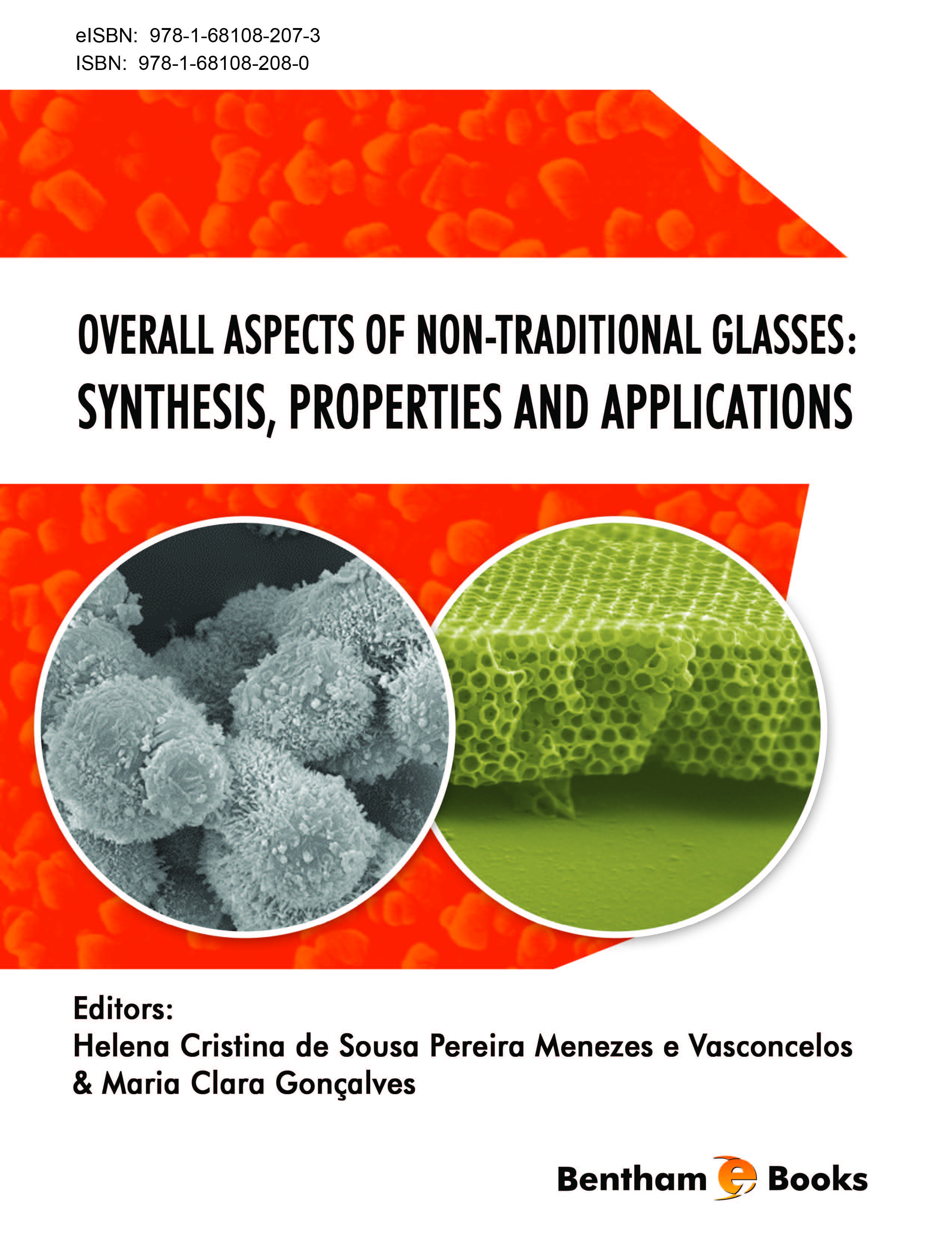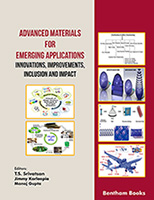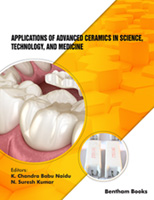It can objectively be said that glass is the material that, throughout its millennial history, has found the most varied applications and has more widely contributed to the scientific and technological outstanding breakthroughs of our time.
Since the beginning of its production in Egypt, three thousand and five hundred years ago, glass, together with its production of objects with high artistic value, also complied an important utilitarian function, first as a container, then as transparent windows and, later, used in the production of the first laboratory objects of the medieval alchemists, and in the production of the first optical lenses. During all that time glass had remained faithful to its traditional composition, consisting mainly of silica, lime and an alkaline oxide (of sodium or potassium). The first important change in its composition took place in 1675 when, in England, glass started to be produced with a high content of lead oxide. These glasses, with a higher refractive index and a lower optical dispersion than the soda-lime ones, constituted an important progress, since the use of both kinds of glass made it possible to construct the first achromatic optical systems in 1760. But the major breakthrough in optical glass did not begin until the end of the 19th century, when the German chemist Otto Schott undertook an extensive and rigorous scientific study regarding the variation of the properties of glasses according to their composition, systematically testing the incorporation of several oxides and fluorides never used hitherto. Specially innovative and interesting were the first borosilicate and beryllium fluoride glasses.
The greatest expansion in the glass research field took place in the 20th century. During the first half of the century, several authors addressed basic aspects of the nature of glass from different scientific points of view. The similar viscous behavior exhibited by glasses of different compositions in the transition range led to the replacement of the imprecise concept of glass by the broader and more adequate concept of glassy state introduced by Tammann. At the same time, different structural glass models were suggested and several criteria about the physicochemical conditions that enable the vitrification process were established. All these fundamental aspects for the understanding of the vitreous state and for the interpretation of its properties are methodically compiled and presented with systematic rigor and conceptual clarity in the chapter What is Glass? which opens the book.
Resting on these theoretical approaches it was possible to predict the formulation of new compositions and to design glasses with improved properties. The considerable proliferation of new glasses during the second half of the 20th century (germanate, vanadate, bismuthate, tellurite, chalchogenide glasses, etc.) brought about the use the plural form of the generic glass denomination, in order to be able to index each emerging glass family by its proper name, as well as to classify them methodically. Together with its great compositional versatility, the peculiar characteristics of glass (non-crystalline structure with short-range order, continuous network with no intergranular boundaries, isotropy, easy to be formed into a plastic state inside a wide temperature range) allow for a freedom of design and adaptability that few materials are able to offer. All these circumstances have contributed to the fact that, in the last seventy years, glass has acquired the multiple and varied appearance of its new families, without losing neither its original image nor its soda-lime-silica traditional composition, destined for the huge industrial manufacture of its conventional products.
But in these years not only have new families of glasses appeared, but new preparation methods have also been developed, which have been added to the traditional melting procedure, as for example, sintering, sol-gel process and vapor deposition or laser pulses for obtaining glass thin coatings. By combining the glass composition and the preparation method it is possible to design glasses with functions tailored to suit specific requirements, either choosing a suitable chemical formulation or based on varied structural changes, like a commutation or a reversible crystallization, which form the basis of optical and magnetic memories.
This is how the so-called functional or active glasses, which nowadays play an essential role in material science and technology, emerged, with very diverse functions (optical, electronic, optoelectronic, biochemical, biomedical, etc.).
If the lapse of time since the beginning of the production of glass, three thousand and five hundred years ago, were conventionally reduced to a time interval of twenty-four hours, the appearance of the new functional glasses in the last sixty years would have happened in the last half hour of that day.
The present book, structured in seven monographic chapters, deals with some of the functional glasses that have had the biggest scientific impact and have played a more relevant role in the appearance of new vitroceramic (or more properly vitrocrystalline) materials, in the advances in instrumental optics, in the development of telecommunications, in the storage of information, in energy saving and in the improvement of surgical implants.
The first vitrocrystalline materials appeared just over half a century ago. Their first purpose was to obtain photographic images in glass created by a photoreduction process of photosensitive metal ions and later fixing them by an annealing treatment leading to the aggregation and growth of the colloidal nuclei formed. These works constituted a starting point to study, with different purposes, the uniform segregation of microcrystals through heat treatments in glasses of very different compositions. Paradoxically, the accidental devitrification of glass, always regarded as a serious defect, when learned to be produced in a controlled manner, turned into a new process for the development of new materials with improved thermal and mechanical properties than the starting glass, to be applied in very diverse fields. The theoretical foundations that rule this process as well as the numerous factors that govern it are broadly documented in the chapter that deals with these materials. It also includes numerous glass composition systems and the different nucleating agents appropriate to each one of them, as well as the main experimental techniques for the adjustment of the conditions of the process and the characterization of the vitrocrystalline material.
The field of optics was always the big propeller of scientific glass research, because the growing development of new optical instruments required the availability of glasses with an increasingly wider range of refractive indexes, lower dispersion, wider range of spectral transmission and non-linear optical properties.
Infrared optics has been widening its field of spectral observation, first with the important breakthrough of chalcogenide glasses in the mid-1950s, then with chalcohalogenide glasses and thereafter with fluoride and heavy metal oxide glasses. The book includes two extensive and interesting monographic chapters respectively dealing with chalcogenide glasses and with heavy metals fluoride glasses, which appeared fifteen years later.
Chalcogenide glasses initially triggered great interest in the field of optics, due to their high refractive indexes and their wide range of infrared transmission, which can reach up to almost 20 µm. But not smaller was the interest in their semiconducting properties and in the fast reversible phase changes, from glassy to crystalline, which can be produced by local temperature changes generated by optical or thermal stimulation or induced by laser pulses. All these phenomena, which are due to the structural characteristics of this type of glasses and to the high polarizability which confers them the particular electronic configuration of their component elements, are thoroughly exposed in the corresponding chapter of this book as a cornerstone for the explanation of its properties and their diverse and interesting applications.
Heavy metals fluoride glasses, besides a wide spectral transmission in the middle infrared range up to about 10 µm, have low refractive indexes and low dispersion losses, which makes them useful for the production of optical fibers of low attenuation for long wavelength lasers. To these characteristics the advantage due to the high concentration of rare earth oxides that can be reached in the glass matrix must be added. The chapter dealing with these glasses offers a broad review that comprises from the different structural models to which they can be ascribed according to their components, to the description of their most advanced practical applications. Of special interest is the extensive information it provides on the wide variety of glasses obtained, represented in a dozen of fluoride ternary systems and summarized in a table of more complex compositions.
The suggestive theme of the photonic crystals is extensively described in another interesting chapter. These novel materials are formed by crystalline dielectric nanostructures with a periodic array adjusted to a similar spacing to that of half the wavelength of light. This periodicity determines that the photons propagate through a photonic crystal in a comparable way as electrons do in a crystalline semiconductor. Thus, if light reflects on a photonic crystal with a spatial periodicity refractive index, a series of interferences between reflected waves are created. Due to the fact that the waves that suffer a destructive interference cannot be propagated, this enables to speak of forbidden photonic bands and allowed light bands. Therefore, photonic crystals are optical materials characterized by having a photonic band gap.
Basing on the possibility of confining light offered by photonic materials, they have been used to produce optical fibers and non-linear waveguides. They can also be used as sensors and illuminated switches. In the corresponding chapter, the theoretical physical principles of the photonic crystals, and their fabrication possibilities in a linear, flat and three-dimensional configuration, are widely discussed and their applications are thoroughly described.
Among the many functions performed by glass nowadays, its contribution to the saving, capture and conversion of solar energy must be highlighted. In the field of architecture, the big modern buildings with extensive glass facades become large heat exchange surfaces. Henceforth, maintaining proper thermal comfort conditions with the minimum cooling or heating energy consumption, requires the use of glasses that, on the one hand are able to reduce excessive heating caused by solar radiation and that, on the other hand, are able to prevent heat loss from the indoor environment by thermal emission to the outside. The different types of glass and surface coatings employed for this purpose, as well as their action mechanisms are described in the chapter dealing with the role of glass in solar energy. In the field of capture and use of solar energy, glass has found an important role as support and protective cover of the silicon photovoltaic cells used to obtain electrical energy from solar energy. An important innovation was the use of special glasses of low phonon energy doped with certain rare earth oxides that present the energy conversion phenomenon (up-conversion). Adequately selecting the composition of glass and the rare earth oxides, the more convenient selective absorption of solar radiation can be attained for its conversion in the most favorable radiation to be absorbed by the silicon inside its absorption band, increasing its intensity and thus enhancing the efficiency of the system.
Another very remarkable field where glass has started more recently to play an important role is the one of biomaterials. The wide range in which its compositions can be formulated and the high dimensional accuracy with which small pieces or thin sheets can be shaped enable the production of bone implants and thin bioactive coatings. In the chapter about bioglasses the evolution of some biomaterials and the conditions they must meet to avoid their rejection and promote bioactivity are described. The variation in the bioactive behavior of a series of glasses of the soda-lime-silica system with a fixed percentage of phosphorus pentoxide depending on their situation in the ternary diagram is graphically presented and the effect produced by the partial addition or substitution with other components is also mentioned. The bioglasses prepared via sol-gel, due to the porosity of their surface are more effective for the fixation and growth of tissues. Bioactivity depends on the composition and structure of the bioglass which, in turn, determines its chemical interaction with the biological fluids. This chapter shows different compositions of bioglasses, as well as of bio-vitroceramics indicating the crystalline phases present in them.
As a whole, the seven chapters that make up this book, written by specialists in each of the fields, offer a valuable review and update the state of knowledge about the new more interesting functional glasses. Each chapter starts with a rigorous scientific exposition of the theoretical principles and the structural foundations in which the properties of each family of glasses are based. The physicochemical operation mechanisms and the applicability of the respective glasses are also explained. Additionally, all chapters have a large bibliographic reference list which increases their documentary value.
For the extensive information it comprises, for the wide scope of its overview as well as for its practical value, this book is of great interest for students, researchers and for those interested in materials science.
José Mª Fernández Navarro
Emeritus Professor, Instituto de Óptica Daza de Valdés and Instituto de Cerámica y Vidrio
Spain





